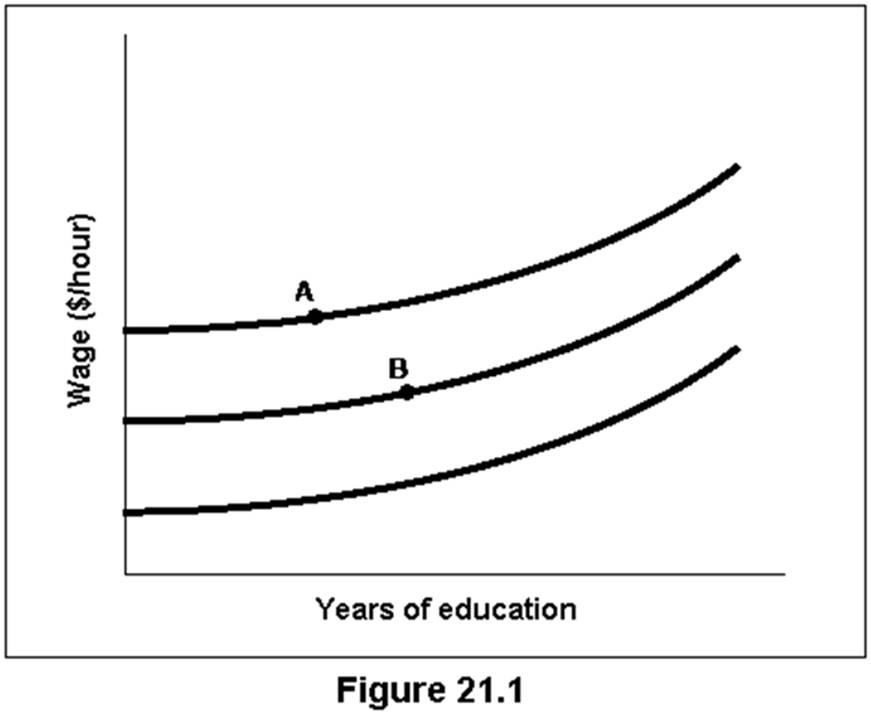Figure 21.1 shows a set of:

A. signals.
B. demand curves for education.
C. isoprofit lines.
D. indifference curves.
D. indifference curves.
You might also like to view...
What is the therapeutic procedure called thatencourages people to speak freely without
fear of being criticized by the therapist? a. Reflection b. Free association c. Transference d. Cognitive restructuring e. Countertransference
Research suggests that when judging photos of people's faces, people demonstrate high levels of agreement regarding which faces appear trustworthy, but that these ratings don't correspond to whether the people in the photos are guilty or innocent of cheating on a test. This finding indicates that measurements can be __________, yet not ___________.
A. reliable; valid B. precise; accurate C. nomothetic; idiographic D. basic; applied
Suppose that a human female is accidentally exposed to a poison at one of four different points in development
If the effect of the poison is that it interferes with meisosis, at which point in the lifespan would we expect it to have the most disruptive effect? a. in the prenatal period, since this is when ova are forming b. in the first year after birth, since this is when brain growth is most rapid c. during early adulthood, since this is when conception of a child is most likely to happen d. in older adulthood, since body cells are most vulnerable at the end of the lifespan
The researcher Robert Fantz discovered that
a) newborn infants prefer to look at simple stimuli rather than complex stimuli. b) when given a choice of visual stimuli, newborn infants do not show a preference. c) newborn infants prefer to look at complex stimuli rather than simple stimuli. d) newborn infants are too young to concentrate on visual stimuli; therefore, it is impossible to measure their preference.